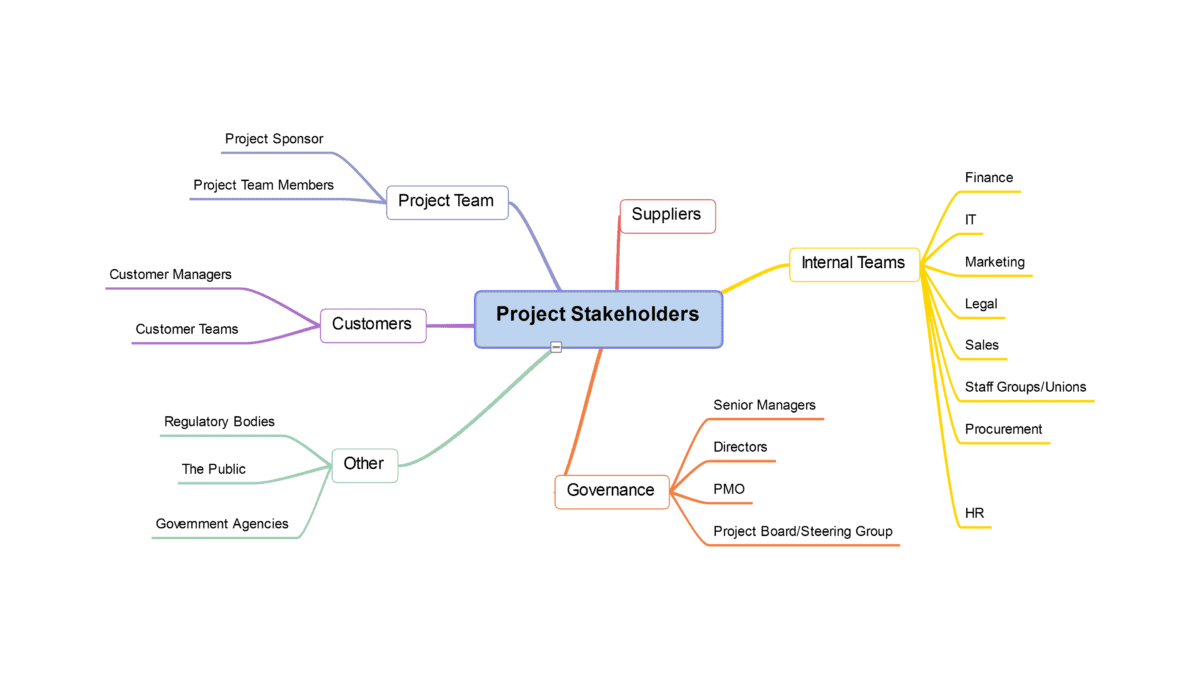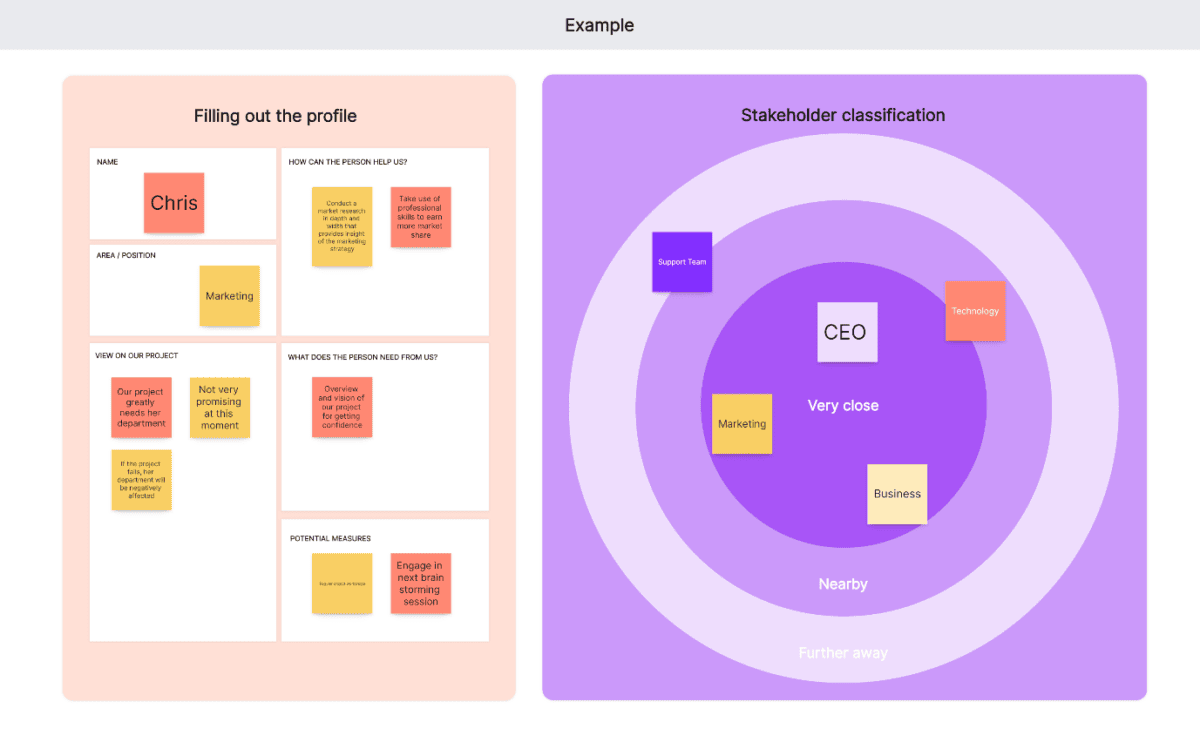Creating and using a stakeholder register for project success
Let me tell you about the time I missed a key stakeholder during a project.
She rang me on the day the project went live, unsurprisingly upset that I had not consulted her. The deliverable we’d created did affect her team, and no one had bothered to tell her.
Oops.
So I know firsthand that stakeholder registers can be really useful tools to ensure everyone is identified and bought into the project at the most appropriate times.
Are you just starting to put one together? Or perhaps you’ve done it and thought, “Have I got that right, is that it?” (Spoiler alert: it probably is, this is not a hard document to pull together, and I have a template for you.)
Given that 33% of project managers say they don’t have time to do stakeholder engagement, it’s important to find some time back – and your register is the first step.

Let me give you some confidence with stakeholder-ing. By the end of this mini-lesson, you’ll be able to create a fab stakeholder register and use it to help you manage the project successfully.
PRINCE2 defines a stakeholder like this:
Any individual, group, or organization that can affect or be affected by (or perceives itself to be affected by) the project.
‘Stakeholder register’ isn’t a term that is used in the APM Body of Knowledge or PRINCE2 7th Edition, but it does show up in PMBOK® – 7th edition, defined like this:
A stakeholder register records information about project stakeholders, which includes an assessment and classification of project stakeholders.
APM’s approach calls this stakeholder analysis, but the practical outcome is still the same.
So, what is a stakeholder register?
A stakeholder register identifies who the stakeholders are in your project and what their interests may be.
In other words, in its most simple form, it’s a list of stakeholders.
From that simple list, you can add in more information, like:
- Role on the project
- Contact details
- Work location
You can also put in more detailed analysis like whether they are supportive of the project, or see themselves as a detractor, how engaged they are and what their key success criteria are for this project.
Typically, you’d transfer the names (or roles) from your list into a stakeholder matrix where you can plot people on a 2 by 2 grid (beloved of consultants and project managers) to show their interest and importance.
If you want to go even further, check out the stakeholder salience model and use that to apply to your list of names.
The stakeholder register forms one of the project artifacts you’ll create throughout the project.
Who goes on the list?
There are three main types of stakeholders:
- Internal: Employees at all levels representing their functions on the project
- External: These are your customers, suppliers, and investors
- Third parties: These are consultants or service providers; people who are paid to drop into the project
Pop them all on the list.
This is my starting point for internal stakeholders, and the mind map below helps, too:
- Project management team (that’s you as the project manager, plus PMO)
- Quality assurance
- IT
- Finance
- Legal
- Customer Service
- Marketing
- Operations
- HR
- Facilities/Property
- Procurement
- Sales/Account Management

You’ll probably have different functions to add to that master list. You won’t need representation on the project from all departments, so tailor to your project needs.
What if you don’t know the stakeholders involved?
If you don’t know the stakeholders involved – the unknown stakeholders – then you’ve got to start looking for them. And it’s not as hard as it sounds, most people are happy to make themselves known once they hear the work is starting.
You can also:
- Ask your boss or project sponsor
- Look at past projects and see who was involved
- Check out lessons learned documentation to see what teams were forgotten about last time
- Talk to the project team and ask them who else needs to be involved
- Ask the stakeholders you have identified.
The broader your list, the more likely it is that you’ll have identified the potential impact the group of people could have on your project.
Elizabeth Harrin's Engaging Stakeholders on Projects provides an in-depth examination of the topic covered in the APM Body of Knowledge 7th edition. It gives project professionals detailed tips, tools, and practical steps to help improve their work and shows how harnessing the power of people is key to project success.
Benefits of creating a stakeholder register
A stakeholder registry lets you easily recall who your stakeholders are and what their roles are in relation to your project or program. Which is helpful if you have a lot of names or when you are just starting out and need a central place to log everything to support your memory.
It’s also helpful to make sure everyone gets the communication they need: the output feeds into your communications plan.
I also use it as a cross-check to make sure I haven’t forgotten anyone. Scan through your company organization chart and see which business areas aren’t represented – then check you haven’t inadvertently missed them out.
Finally, it’s useful for decision-making, as it highlights who is going to be making the important calls.
Let’s create a stakeholder register
First, download your free stakeholder register template from my Template Library.

Step 1: Identify your stakeholders
Use the starting list above to identify who is relevant to this project. Some of these people will be in your project charter, or you might link the stakeholder log to the charter instead of writing it all out again.
Stick them all on the list, along with their basic details like phone number, email address, preferred contact method, location, etc.
I just create an Excel spreadsheet (which is the template I share with you in the Template Library) but you could use
You can also note down any particular things they’ve asked for, key success criteria or deliverables they are expecting. This helps identify any conflicting requirements.
Step 2: Assess interest and influence
Consider how interested they are in the success of the project and the level of influence or power they have over the project. You’ll have to make some professional judgement guesses here based on how they seem to you.
Typically, the more senior a person is in the organization, the more power they have for decision making, resource allocation and securing funding.
Typically, subject matter experts and the project customers are the most interested.
Happy days if your project sponsor is both interested and influential to the max.
This analysis will help determine how much attention they need from you during different stages of the project. You’ve only got so much energy, so make sure it goes to the people who can do the most good on the project.
Below is an alternative image for thinking about stakeholder analysis, where you build out a profile per image, from a whiteboarding tool I use. Your own whiteboarding tools might have similar templates.

Step 3: Keep your records securely
No one wants to read that they aren’t influential. Keep your document somewhere secure.
You might want to leave sensitive stakeholders off the list if it’s better their information isn’t shared.
Step 4: Update and revise regularly
People come and go on projects. Once your initial list is created, regularly review and update it based on changes in interest levels among stakeholders over time as well as any new contacts that may start in the business.
If you have completed any data analysis training, you’ll know that it’s important to make sure your data is clean and useful, so that’s why we have to revise regularly.
How to use the register for stakeholder engagement
OK, so now you’ve got it, how does it help you beyond giving you information for other project documents?
Set roles and responsibilities
The register is a good starting point for building out roles and responsibilities on the project, so everyone knows who is doing what. (I have a free template for a roles and responsibilities document, too.)
Plan your communications
All stakeholders are going to need some kind of communication. The register shows you who is going to need most, and what type, and if you’ve included their communication preferences, that all feeds into the comms plan.
Good comms is what gets a project over the line, in my experience.
Tailor your engagement effort
If you have to win stakeholders over when your time and energy is limited (and theirs is too), then the register helps you identify where to spend your time.
As projects progress over time, track any changes in interests or influence levels among stakeholders. You’re especially looking out for anyone who started off strong and who is showing less interest now.
If you spot someone who is less engaged, either reach out and ask they why directly or change up how you are working with them to see if that makes a difference.
Tailor your engagement approaches (which used to be called stakeholder management strategies, but we can’t manage other people’s behaviors as a project manager) to fit the needs of the individuals.
Read next: Tips for proactively managing stakeholder relationships
Keep contact info up-to-date
It’s also useful to update contact information for each stakeholder on an ongoing basis as needed. Then everyone involved has up-to-date contact information when they need it most – during times when quick decisions must be made or urgent messages need to be sent out.
Identify and manage risks
Do your stakeholders disagree on something? Have you spotted any conflicting requirements or deliverable requests for things you won’t actually be delivering? Have you got representation from all the teams or is one area struggling to find resource?
The exercise of completing the register will lead you to have a number of interesting conversations and you might find risks drop out of those.
Manage stakeholder expectations
Stakeholders sometimes have unrealistic expectations and the register can help you spot those. At least, it gives you a focus for your conversations with the key stakeholders.
Check in on stakeholder satisfaction throughout the project and update the register with what you learn – it’s all useful for helping you improve the way the team works.

Your next steps
A well-maintained stakeholder register is a powerful tool in project management. It enables you to identify key stakeholders, grasp their interests and needs, and plan effective engagement strategies. By starting out with a solid base and updating your register as you go, you can get closer to streamlined communication, anticipating and mitigate risks, and driving successful project outcomes.
So what’s keeping you? If you need any help pulling your stakeholder log together, you can connect with me on LinkedIn for quick questions or book a 1-to-1 call with me.

